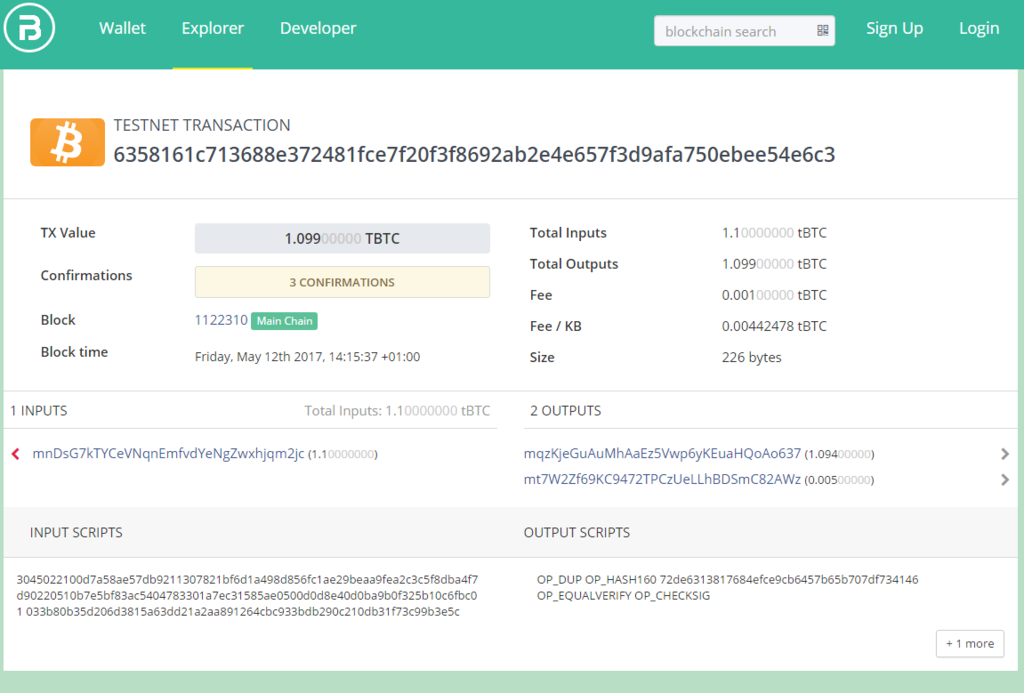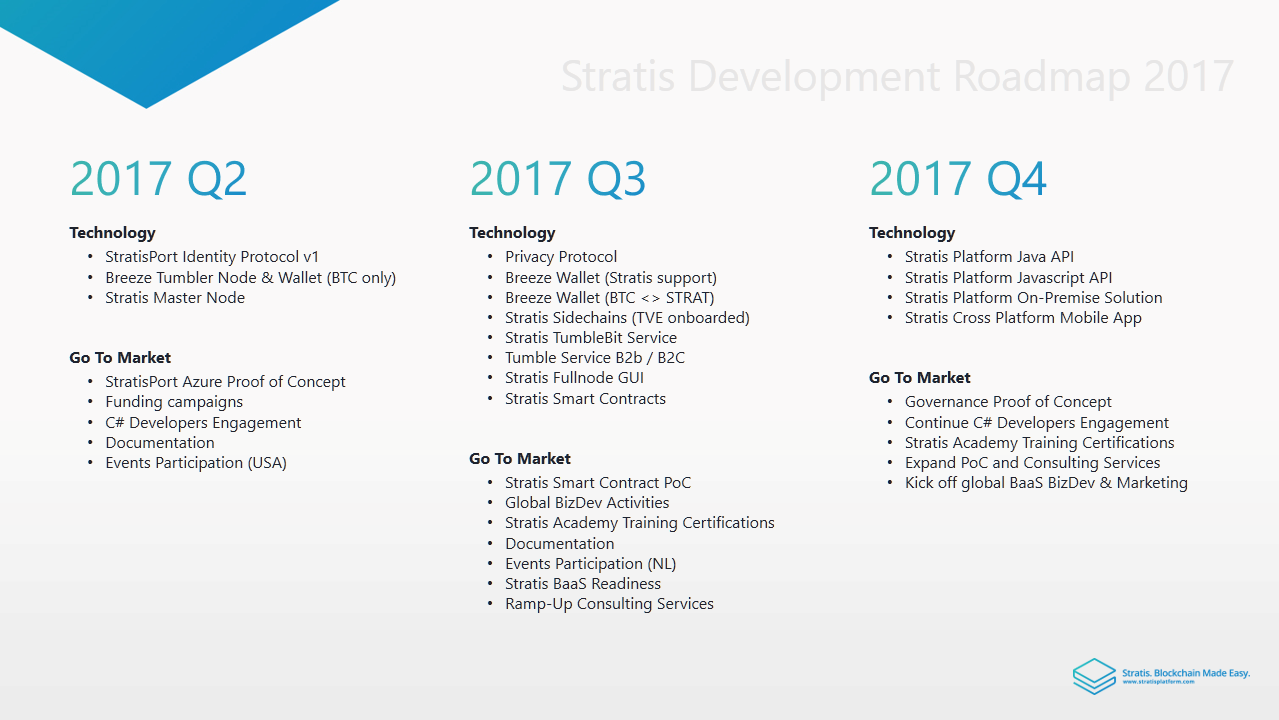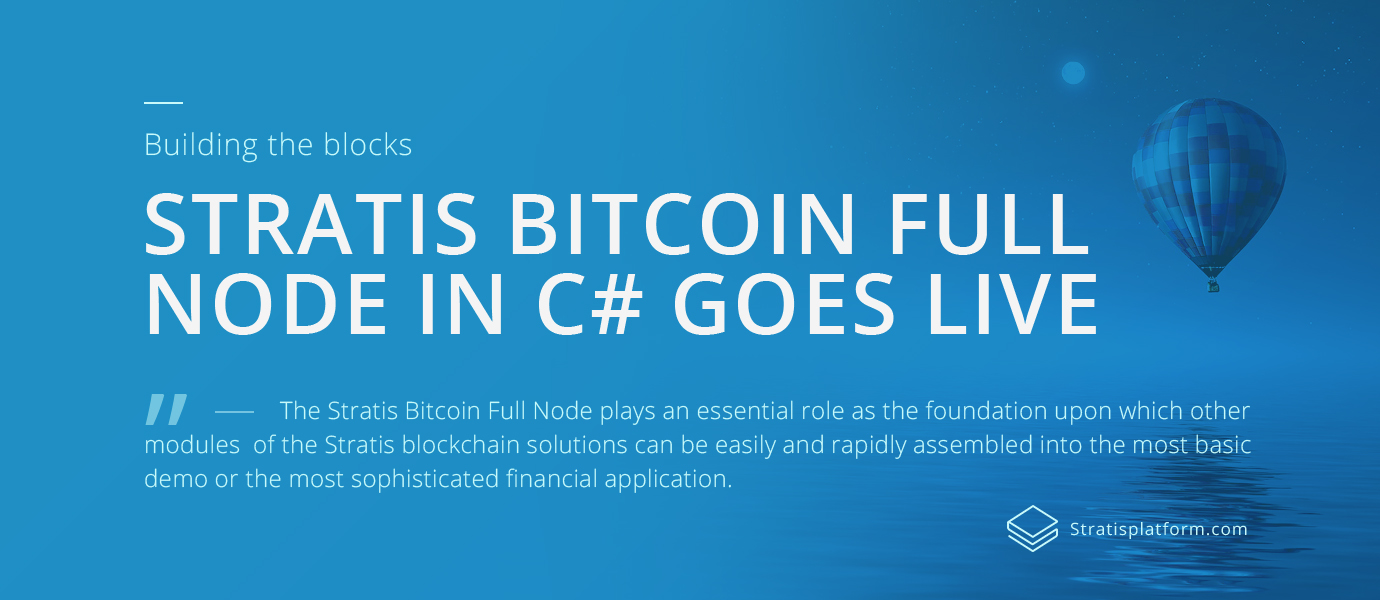
On the 19th of April, Stratis Group Ltd held an amazing Q&A hosted by Heidi. Stratis was represented by Founder / CEO Chris Trew, Director of Operations Policarpo Guerrero and Stratis Blockchain Developers Dan Gershony and Jeremy Bokobza. The following is an excerpt of the main topics addressed during the conversation. Some texts may have been added for additional information, links and added clarity. We would like to thank Heidi for hosting it and also like to thank the community for sending in all of their questions on Slack and Twitter.
C# Corner Conference
Chris, Dan and Krushang went to New Delhi in India to speak and present Stratis at the C# Corner Conference. Looking back at it, it definitely feels we helped to spread the word on Stratis and the Blockchain to all the developers. The main thing we took away from the conference was building relationships with several people at Microsoft. One of those relationships was with Magnus (Magnus Mårtensson / Twitter: @noopman) , who is a Microsoft MVP of Azure and a regional director at Microsoft. Magnus works closely with the Azure team, so it was brilliant actually speaking with him, catching up, and letting him know exactly what it is we are working on here at Stratis. He seemed very excited by the potential of Stratis. We also made some connections with the Indian Regional Director, and we had some great conversations. Some ideas came up about what we could do together and how we can promote Stratis in India.
Project Breeze / Masternodes
A lot of questions from the community were about Project Breeze and the ‘Masternodes’. We are happy to finally share the requirements to run a master node with all of you. The requirements for a master node are 250,000 STRAT. The 250,000 Stratis requirement for the master node is not something that we put in place. It’s something that is dictated by the technology. Tumblebit works best with a smaller number of servers. It provides privacy through obfuscation. If we have a large number of servers, the technology just will not work, so it’s not something that’s been put in place because we want a whale club or because we want to reward the large holders of Stratis. This is a technical requirement that’s in place. We’ve said we don’t want more than twenty nodes, and by having this minimum amount of 250,000, we hope to never go above above that amount (twenty servers).
There’s going to be several master nodes in the future that provide functionality across the Stratis Platform, and our goal is to have a node tier for every level of holders, so that even people who have a 1,000 Stratis, 10,000 Stratis or 100,000 Stratis can run a node as well.
Bitcoin and Stratis
In the Q&A we were asked if we would consider Stratis potential competition for Bitcoin, or if it is complementary to Bitcoin? We would definitely say that we complement Bitcoin. Our standpoint on it is that every other blockchain technology and start-up out there is in competition, but Bitcoin is not. We want the Stratis blockchain to be seen as somewhat of a test-bed for Bitcoin, so we’re going to be implementing a lot of the improvement proposals being suggested for Bitcoin that haven’t been implemented yet. What we’re hoping for is that the Bitcoin Core guys are going to look at the Stratis blockchain and see we have a reasonably sized market cap, and we’ve implemented this technology, and its working, in production, and say “do we need to think about bringing it over into Bitcoin?,” and visa-versa. We’re going to be bringing over a lot of the features implemented in Bitcoin over to Stratis, so we would definitely say we’re not trying to compete with or replace Bitcoin, but rather, we’re trying to complement it.
Stratis and Ethereum (Smart contracts)
So another question we got and have been asked frequently is what is the difference between Stratis and Ethereum? Well Stratis is built from the Bitcoin blockchain. And also, we plan to offer a slightly different smart contract model from what Ethereum is doing. All of the smart contracts from Ethereum are running on the Ethereum blockchain, but we will probably separate that to where smart contracts will run on sidechains or linked chains only.
That provides various benefits because smart contracts that are run on the sidechains will not bloat the main chain. As far as the difference between Stratis and Ethereum, Ethereum is built around touring-complete smart contracts, and that is their main focus. Stratis is more of a platform, and instead of building our platform around smart contracts, we’re going to be building it around basically all of the main innovations in blockchain technology. We want to be a one-stop-shop. We don’t ever want a company to need to have to go to another provider because we provide everything on the Stratis blockchain. Plus, there is the Stratis Consultancy. We can actually come in, analyze your requirements, go away, create designs, applications, application designs, architectural designs, and work with your in-house developers. You can outsource the whole development to Stratis. So, we are providing that enterprise managed service behind this blockchain solution, and that’s definitely one of our main differences to Ethereum.
There is also a benefit to having C# developers writing their own smart contracts in-house. There’s no barrier of language, or smart contract language, like Solidity. You’re just letting your already existing team of developers build on top of the Stratis Platform.
Regarding to the smart contracts, is that ours are in C#, so that as soon as we deliver these smart contracts in native C#, ten million C# developers around the world will be able to start writing smart contracts. They won’t have that whole learning curve of learning a totally new language. There’s another side to the coin as well. Because it’s in C#, which is a well-known and mature language, there’s millions of developers around the world that can audit the code of the smart contracts and look for any issues; whereas, with a new language, you have that learning curve, so you’re going to have to wait until there’s enough developers that have learned this new language in order to have that audit trail, but we’re going to have it out of the box.
Increase of value of the $STRAT token
The past few weeks the price per $STRAT has significantly risen. We think several factors have caused the increase in value, but the main one is just the realization of what we actually trying to build here. With Stratis, we like to think we overachieved, so the valuation is sort of following the progress of the projects. We are very open and visible in our development. You can come in into any of our development channels, and every time a commit is actually committed to one of our repos, it automatically posts a message in the development channel. People can constantly see the development take place. We are not just an “alt-coin.” We are well beyond that stage. Now, we are building a huge organization behind this project. We’ve got a great team of advisors and consultants advising us in the background, so a lot of what people see, a lot of these good moves we are making, are not just down to Chris or Dan. There is so much input coming into these decisions.
Chris Trew: As far as I’m concerned, we have not seen really anything yet. We are just getting started. We are in first gear.
Sidechains
Any of our assets will probably be deployed on our sidechains. That’s the most likely thing to happen and it’s definitely tradable. One of our main goals is to get the Stratis Platform deployed on some exchanges, and that will definitely prove its capabilities and technology, and show its technology’s strength.
Sidechains come in many flavours. Basically, it’s down to the implementation of the sidechain, what kind of mining algorithm they want to run, and they will have a variety of algorithms to run that we already have implemented in C# available to them, from PoW (all kinds of algorithms), PoS or Hybrid (PoW+PoS), or even what we would call proof of authority, where masternodes will actually be validating blocks on the sidechain, so the sidechain doesn’t need to worry about the security or the mining aspects, and it’s all taken care by the masternodes, and obviously, masternodes can collect fees for that work.
Funding
We expect Stratis to be self-sufficient within the next twelve months, but we’re going be raising ‘Series A’ funding within the next two months, so we are going to have an injection of capital. We’re not worried about funding at all. We didn’t even spend half of our funds, and we delivered on practically all of our promises that we’ve made up until this point, so we are in a very good position, and also we have a huge amount of Stratis available for development, which is actually worth three times as much in comparison to the bitcoin we hold. So, as far as funding is concerned, we are not concerned at all. We’ve got funding to see us through for, probably, the next four years, but we hope that in four years, we’ll be a whole different organisation, a huge multinational,or a conglomerate even, so we’re not concerned about funds at all.
One thing I would like to speak about is at the moment we are defining our pitch-deck that is going to be used for the VC-funding, and for the ‘Series A’ funding, so we will have a pack that will go out to VC firms, and it will have all of the information about Stratis: our business plan, revenue model, budget plans, and all of the information that is required, and we actually made quite a big shift on our focus because it was all built around Stratis as a company and our blockchain as a service (BaaS) offering.
When the guys were giving him the final pitch, for the final approval, he actually stopped them in their tracks and said that we are not talking about one of the exciting things about Stratis, and that is the Stratis Token and the Stratis Blockchain. So, now what happened is that we’ve made a complete shift, and our whole business and consultancy is all built around the token, the benefits of the token, and its quite large market cap that we’ve got surrounding this blockchain, which gives it economic security because of the amount of money actually involved, so I think when people actually see the pitch that is going out to the venture capitalists firms, I think they will be very happy because I know some people have concerns about; ‘Okay so you have Stratis Consultancy, but how does it add value to Stratis as a token?’. Well I can tell everybody now, we’re building the Stratis Consultancy around the Stratis Token.
Cloud Stratis
Originally, the idea for Cloud Stratis was that it would be an orchestration platform, and we will build our own data-centre environment. In our visit to the C# Corner, we spoke with Magnus Martensson, regional director at Microsoft, Azure MVP, probably one of the greatest minds out there around Azure, and Azure Consultancy. We had a great chat with him about our Cloud Stratis platform, about our approach, and I can tell everyone now that we are no longer deploying our own data-centre solution. It’s going to be built on Microsoft Azure. We are currently working with the Microsoft Azure team on that approach and exactly how we can get that there, and for the first time since Stratis was started, we starting to feel real support from Microsoft.
The road ahead
As far as long term vision, we want to cement ourselves as the go-to platform for enterprise organisations. If an enterprise organisation is looking at blockchain technology, we want Stratis to be the first name that comes up, and we do have a long road getting there, but we are definitely in a very good position at this point, and we are building the organisation behind Stratis. We are building a development team, the marketing, promotional strategies and growth hacking strategies behind it. All of this is sort of played in the small amount of success that we´ve seen so far. We´re not even in first gear. We´re really not. No one has seen anything yet. There is so much more to come from the Stratis Project. Once we start delivering our tech, and people can see and feel each aspect, I expect there will be many more happy days for us.
The above is only a ‘small’ part of the total Q&A. So we encourage all of you to watch or read the Q&A. Our community members ‘freeme62410’ and ‘snappaz’ have made a transcript of the Q&A, you can find it on our Wiki. You can also look back the video Q&A.
Chris Trew: My goal is top three market cap. I see anything else as a failure, so the future looks bright.
https://www.youtube.com/watch?v=_dZIGSD9NUg

















